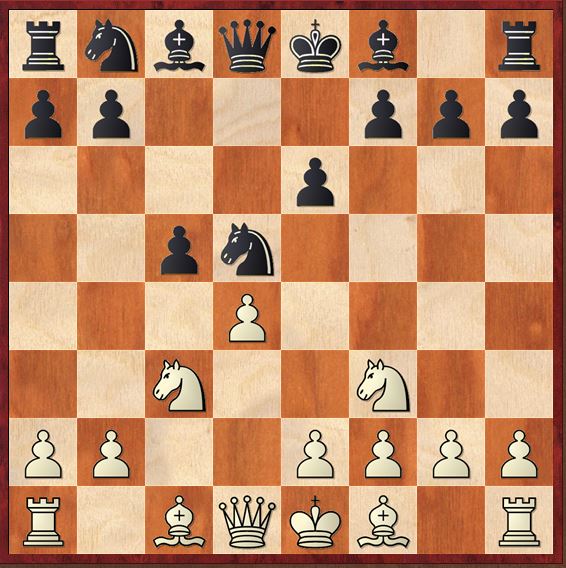Η βαριάντα της Semi-Tarrasch ονομάζεται έτσι γιατί εν αντιθέσει με την κανονική βαριάντα Tarrasch ο μαύρος δεν έχει ένα απομονονωμένο πιόνι στο δ5, αλλά στις αλλαγές στο κέντρο απαντά με το κόψιμο του ίππου. Είναι μία βαριάντα που έχει χρησιμοποιηθεί κατά καιρούς από ισχυρούς σκακιστές (ένα καλό παράδειγμα είναι ο Vladimir Kramnik) και ήταν το αντικείμενο της “συζήτησης” ανάμεσα στους Magnus Carlsen και τον Anish Giri στον χθεσινό τελικό του Chessable Masters.
Η θυσία στο δ5
Ο παγκόσμιος πρωταθλητής κέρδισε μία εντυπωσιακή παρτίδα χρησιμοποιώντας μία τυπική θυσία για τις θέσεις της Semi-Tarrasch, την θυσία δηλαδή του δ πιονιού και στη συνέχεια την προώθηση ε4-ε5. Με τον τρόπο αυτό δημιουργεί μία θέση που το πιόνι ε5 του δίνει τον απαιτούμενο χώρο για να επιτεθεί στην πτέρυγα του βασιλιά, καθώς ο μαύρος δυσκολεύεται να συντονίσει τα κομμάτια του, ιδιαίτερα τον λευκοτετράγωνο αξιωματικό που είναι σχεδόν παρατηρητής των εξελίξεων.
Δεν είναι η πρώτη φορά που έχει παιχθεί η συγκεκριμένη ιδέα, πράγμα που δείχνει και πόσο σημαντικό είναι να γνωρίζουμε τις παρτίδες των παικτών του παρελθόντος, ώστε να υπάρχει μία ποικιλία ιδεών τις οποίες μπορούμε να χρησιμοποιήσουμε ανά πάσα στιγμή. Οπότε σας παρουσιάζουμε σήμερα δύο κλασικές παρτίδες με το συγκεκριμένο θέμα και φυσικά τη νίκη του Carlsen επί του Giri με σχόλια του Βούλγαρου GM Bojkov Dejan.
Study your classics!
Η δεύτερη παρτίδα είναι πιο γνωστή και είναι η νίκη του Polugaevsky επί του Tal το 1969.
